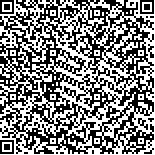本文已被:浏览 3542次 下载 3631次
投稿时间:2017-05-10
投稿时间:2017-05-10
中文摘要: 作物土传真菌病害是当前农业所面临的最重要问题之一,由于防治困难,正日趋成为限制我国农业生产可持续发展的重要因素。基因沉默(或RNA沉默,RNAi)是广泛存在于真核生物中,基于同源序列调控基因表达的一条重要途径,而由此发展起来的基因沉默技术,作为一种新防治策略被广泛地应用于防控植物有害生物的研究中。文章综合介绍了作物土传真菌病害的发生与防治现状、RNA沉默及其在植物有害生物防控应用的最新研究进展,客观分析了基因沉默技术在防治作物土传真菌病害的巨大潜力和亟需解决的主要问题,阐述了研发基因沉默技术对可持续控制作物土传真菌病害的重要性及其巨大应用前景。
Abstract:Crop disease caused by soil-borne fungal pathogens is one of the major threatens to agriculture nowadays. Due to the lack of efficient control method, it is becoming a key factor to restrict sustainable development of agricultural production in China. Gene silencing (or RNA silencing, RNAi) is an important pathway in eukaryotes that regulates gene expression based on sequence homology. Gene silencingbased technology has been widely used as a new strategy for plant protection. In this review, we summarized occurrence and general prevention method of crop disease caused by soil-borne fungi, and introduced recent advances and applications of RNA silencing in crop protection. By deeply discussing potential values and problems of gene silencing technology for controlling soil-borne fungal pathogens, we point out the advantages and great importance in exploiting gene silencing-based technology for sustainable control of soil-borne fungal pathogens.
keywords: crop soil-borne fungal disease gene silencing
文章编号: 中图分类号: 文献标志码:
基金项目:中科院战略性先导科技专项(B类)(XDB11040500)
| 作者 | 单位 |
| 郭惠珊 | 中国科学院微生物研究所 北京 100101 |
| 高峰 | 中国科学院微生物研究所 北京 100101 |
| 赵建华 | 中国科学院微生物研究所 北京 100101 |
| 张博森 | 中国科学院微生物研究所 北京 100101 |
引用文本:
郭惠珊,高峰,赵建华,张博森.发展基因沉默技术,控制作物土传真菌病害[J].中国科学院院刊,2017,32(8):822-829.
Guo Huishan,Gao Feng,Zhao Jianhua,Zhang Bosen.Development of Gene Silencing Technique for Crop Protection Against Soil-borne Fungal Disease[J].Bulletin of Chinese Academy of Sciences,2017,32(8):822-829.
郭惠珊,高峰,赵建华,张博森.发展基因沉默技术,控制作物土传真菌病害[J].中国科学院院刊,2017,32(8):822-829.
Guo Huishan,Gao Feng,Zhao Jianhua,Zhang Bosen.Development of Gene Silencing Technique for Crop Protection Against Soil-borne Fungal Disease[J].Bulletin of Chinese Academy of Sciences,2017,32(8):822-829.


